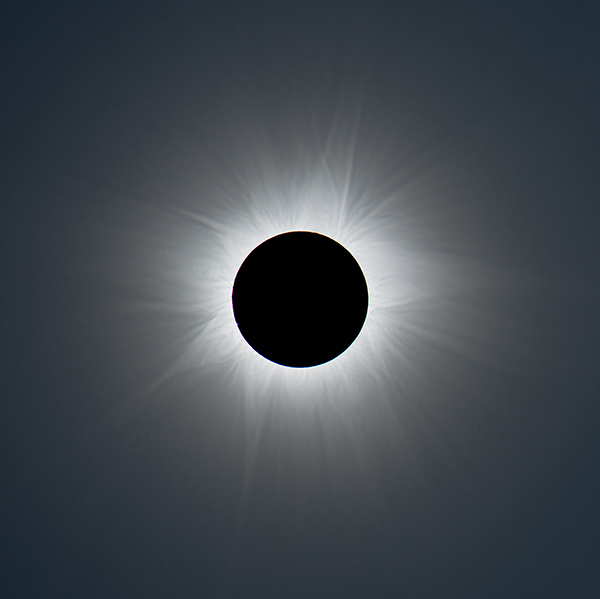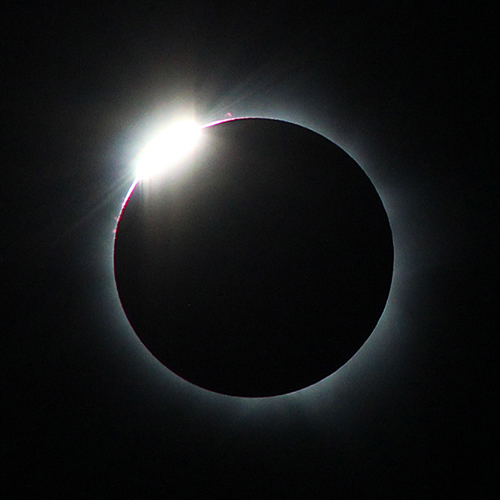Don’t Miss the Solar Eclipse!
This is the first time in almost a century that a total eclipse will traverse the fruited plains from coast to coast.
Do you plan to see the total solar eclipse on August 21? No? What? Are you ill, or trapped in a dungeon? C’mon. This is the first time in almost a century that a total eclipse will traverse the fruited plains from coast to coast. You’ve got to see it if you can! Thousands of people from around the globe will come to the US to catch the eclipse. If you live in one of the lower forty-eight states of the US, though, you can catch an eclipse without showing anyone your passport.
Partial and Lunar Eclipses
The last total solar eclipse seen anywhere in the continental US was February 1979. It appeared as a partial eclipse in my hometown of Amarillo, Texas. I remember the day for one reason: My mom had the good sense to spring me from school and drive me to the local planetarium. From there, I could watch the event through special filtered glasses. To me, it looked like the Moon had taken a bite out of the Sun. Except no Moon was visible: just the bite and the Sun.
Maybe you’ve seen a partial eclipse, and thought, “No big deal.” I get that. The bright part of the Sun, called the photosphere, is so bright that even if half of it gets covered by the Moon, it’s hard to tell the difference. To the naked eye — without special glasses or other methods to view or project the eclipse — it just looks like the sky has gotten a bit cloudy.
You’ve probably also seen a lunar eclipse — when the Earth passes between the Sun and Moon, and the Moon turns red. Those are cool, but aren’t all that rare or exciting.
Totality
Here’s the thing: A total solar eclipse is nothing like a partial eclipse or a lunar eclipse. In a total solar eclipse, just before “totality,” the last bright bit of the Sun’s photosphere looks like the pink diamond of a cosmic engagement ring. When the Moon covers the Sun’s disk, the sky goes dark. The temperature drops. The stars appear. Critters get confused and go quiet. And the dim outer atmosphere of the sun, the corona, reaches out from the black lunar disk like the arms of an enveloping ghost.

The total phase of the November 13, 2012, solar eclipse as seen from Australia. This is a composite of short, medium, and long exposures.
If you see this, you will remember it. During a total eclipse, simple villagers and skeptical scientists are overcome with awe in equal measure. People cry and cheer and gasp and pray.
What It Is
The mechanics are simple. A solar eclipse happens when the Moon, Sun, and Earth line up in a straight line. The Moon passes in front of the Sun. If you happen to be in the path of the Moon’s shadow, and it’s not cloudy, you’ll see an eclipse. Those fully in the Moon’s shadow (the umbra), will see the Moon cover the Sun. If you’re just outside that path, you’ll see a partial eclipse (the penumbra).
When
On August 21, the Moon’s seventy-mile wide central shadow will hit landfall in Oregon at 9:04 am local time. It will pass southeast through Idaho, Wyoming, Nebraska, Missouri, Kentucky, Tennessee, and South Carolina. (Mostly Trump Country, complains The Boston Globe.)
My family and I will be in Columbia, South Carolina, where the Sun will go black at 2:43 PM eastern time. If it’s cloudy, we’ll be in a mad dash to the closest spot with clear sky.

The “diamond ring,” which appears just before the beginning of totality.
See the maps and times about it here, here, and here. If you want to make the event a learning experience, NASA has made it easy with a terrific website and even an app.
Much of the US population in the lower forty-eight states is just a few hours’ drive to a sweet spot. So, it’s not too late to plan a trip — though it may be too late to find a hotel room.
Don’t forget to buy the special glasses to protect your eyes. Even when the Sun is almost covered, its light could still fry your rods and cones. Check out this guide on how to view an eclipse safely.
If you aren’t in the Moon’s central shadow at the right time and place, you can still see a partial eclipse in the mainland United States. The closer you are to the path of totality, the more you’ll see. It’s worth getting the special glasses so you can view it, but it won’t be nearly as dramatic outside the Moon’s central shadow. It won’t be dark.
If you’re anywhere near the path of totality on August 21, though, don’t miss out. Trust me.
Just a Coincidence?
Have you noticed the odd coincidence? The Moon and the Sun aren’t much alike. Yes, they’re spherical. But one is a giant ball of gas and plasma. The other is a much smaller rock. And yet, during a total eclipse, they mark off the same space in our sky. They match. That’s because the Sun is about four hundred times larger than our Moon, but also about four hundred times farther away.
Eerie huh? Is that nice fit just a coincidence? Or is there something more to it? I’ll answer that in the next installment.
Jay Richards is the Executive Editor of The Stream, and co-author of The Privileged Planet. Follow him on Twitter.







